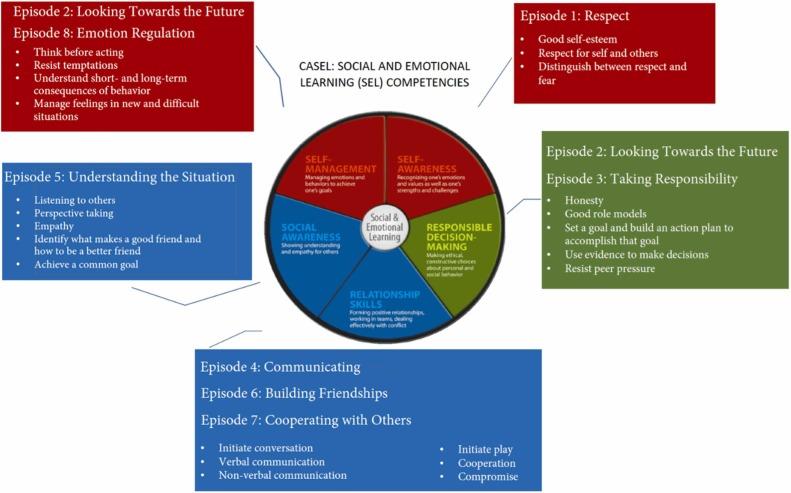Top Future directions for SEL in Schools: Innovations & Trends Shaping Social-Emotional Learning
Social-emotional learning (SEL) has become a cornerstone in modern education, helping students develop essential skills such as self-awareness, empathy, responsible decision-making, and interpersonal competence. As we look toward the future of SEL in schools, innovative approaches, advanced technologies, and evolving best practices are reshaping the landscape. This thorough guide explores the top future directions for SEL in schools, emerging trends, benefits, practical tips, and real-world case studies that highlight how SEL is transforming student experiences.
Why SEL Matters: Key Benefits in School Environments
The importance of social-emotional learning in schools cannot be overstated. Research consistently shows that integrating SEL:
- Improves academic achievement
- Enhances mental well-being and resilience
- Reduces behavioral issues and bullying
- Builds stronger teacher-student relationships
- Equips students for success beyond the classroom
As educational priorities shift to whole-child development, SEL is no longer just a “nice-to-have”—it’s a crucial component in preparing students for life.
Emerging Trends in Social-Emotional Learning
Let’s explore some of the most promising innovations and future directions that are shaping SEL in schools around the world:
1. Integration of SEL with Academic Curriculum
- Blended SEL & Academics: Future-focused schools increasingly infuse SEL principles directly into academic subjects. For example, literature classes analyze characters’ emotions or group problem-solving in STEM activities builds collaborative skills.
- Project-Based learning (PBL): PBL encourages teamwork,communication,and reflection,seamlessly connecting SEL to real-life academic projects.
2. Technology-Enhanced SEL
- SEL Apps & Platforms: Tools like ClassDojo, Second Step Digital, and Mood Meter help students self-monitor, reflect, and receive personalized guidance in real time.
- AI-Powered Insights: Emerging artificial intelligence can detect stress, emotional cues, and engagement levels to tailor instruction and early interventions.
- Gamification: Interactive games and simulations foster safe spaces for students to develop empathy, conflict resolution, and problem-solving skills.
3. focus on Equity and Inclusivity in SEL
- Culturally Responsive SEL: future directions prioritize materials and approaches that reflect diverse cultures, languages, and identities, addressing the unique needs of all students.
- Trauma-Informed SEL: Schools recognize the impact of trauma and ensure SEL is sensitive to students’ emotional histories and current challenges.
4. Family and Community Partnerships
- SEL at Home: Schools offer online resources, workshops, and family engagement toolkits so SEL learning continues beyond the classroom.
- Community Collaboration: Collaboration with community organizations, mental health professionals, and businesses provides students with comprehensive support.
5. Whole-School and Whole-Child Approaches
- Staff SEL Training: Schools invest in professional development to equip teachers and staff with SEL competencies.
- School Climate Initiatives: Creating safe,supportive environments where every student feels seen and valued.
Innovative Strategies & Practical Tips for Integrating SEL
Ready to bring SEL to the next level in your school? Here are practical strategies and tips, inspired by emerging research and schools leading the way:
- Incorporate Daily SEL routines: Begin each day with mindfulness, emotional check-ins, or gratitude journals to foster habit formation.
- Student-Led Initiatives: Empower students as SEL ambassadors, peer mentors, or club leaders to champion SEL activities.
- leverage Digital Tools: Use age-appropriate SEL platforms to keep activities engaging and data-driven.
- Professional Learning Communities (PLCs): Encourage educators to collaborate, share best SEL practices, and refine approaches throughout the year.
- measure and Celebrate Progress: Track SEL outcomes with student feedback, behavior data, or growth portfolios, and celebrate milestones openly.
Case Studies: SEL Innovations in Action
Case Study 1: Tech-Driven SEL at Franklin Middle School
Franklin Middle School implemented a digital platform that allowed students to record daily mood check-ins and self-set goals.Teachers accessed real-time dashboards to tailor support. Within a year,the school saw a 30% reduction in disciplinary referrals and improved attendance rates. Personalized feedback and early intervention helped students feel heard and understood.
Case Study 2: Community-Connected SEL in San Diego Unified School District
By partnering with local nonprofits, San Diego Unified ran SEL workshops for families and engaged community mentors in positive behavior programs. These partnerships deepened student engagement and supported at-risk populations through mentorship, social services, and parent education.
Case Study 3: Culturally Responsive SEL at Maple ridge Elementary
Maple Ridge redesigned its SEL curriculum to celebrate students’ cultural identities, employing storytelling, art, and parent input to build empathy and inclusiveness. School climate surveys indicated a greater sense of belonging and lower rates of bullying.
First-Hand Experience: An Educator’s Outlook
“when we embedded SEL into every subject, students’ attitudes transformed.They became problem-solvers who support each other. It wasn’t just about feelings—it was about building a community in our classroom. The changes spilled over into the playground and even at home, which parents noticed and appreciated.”
— Jennifer L.,5th Grade Teacher
The Future of SEL: What Lies Ahead?
The future of social-emotional learning in schools is luminous,with several transformative directions on the horizon:
- Universal SEL Assessment Tools: New digital assessments will help educators track SEL growth alongside academic metrics.
- Expanded Teacher Readiness Programs: Future teacher education will integrate SEL competencies as foundational skills.
- Global SEL Collaboration: International networks will share culturally nuanced best practices, making SEL more adaptable worldwide.
- Continued Personalization: Ongoing advances in AI and machine learning will further personalize SEL experiences, delivering just-in-time support for each learner.
Conclusion: Embracing the SEL Revolution
As schools look ahead, social-emotional learning will continue to evolve in creative and impactful ways. By integrating SEL with academics,leveraging technology,emphasizing equity,and fostering community partnerships,educators are preparing students for a rapidly changing world. The future directions for SEL in schools promise not only better scholars but more empathetic, resilient, and thoughtful citizens. Now is the time to invest in these innovations, share success stories, and commit to SEL as an essential pillar of educational excellence.
For schools ready to lead, embracing these trends and innovations in social-emotional learning can create a lasting difference—one student, and one community, at a time.

